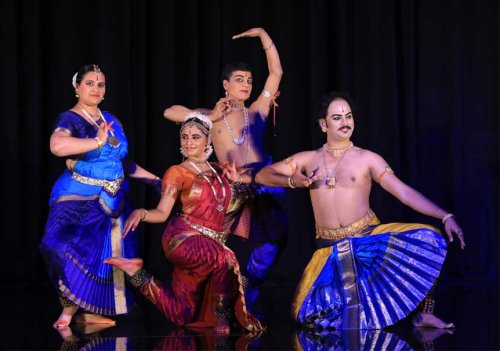
|   |

|   |
Young soloists impress - Chittaranjan Mothikhane e-mail: chittaranjanmothikhane@gmail.com July 21, 2017 The 16th of July 2017 saw the Articulate Festival series in its 14th edition. The performances that took place at the Premier Convention Hall in Mysore witnessed four artists in their solo rendition of their chosen dance style. The evening began with a Pushpanjali and Ganesha sthuthi in Vazhuvoor style of Bharatanatyam by Bhanupriya R, disciple of Guru Revathi Narasimhan, Bangalore. Set in Chakravaka raga and adi tala, Muthuswamy Dikshitar’s krithi “Gajananayutham Ganeshwaram” was the medium through which obeisance was paid to lord Ganesha. This was followed by a Chaturashra Jati Alarippu and a keerthanam before she concluded with a tillana in Kaanada raga and roopaka tala where in the sahithya, Sri Rama was extolled. Her geometrically precise movements were a delight to watch. Her rendition of Tanjavur Shankara Iyer's composition “Ranjani mrudu pankajalochani” in Ragamalika pinned her to the list of rising stars in the horizon of Bharatanatyam. It was a delightful and spiritually elevating performance. In the second segment of the festival was Bharatanatyam by Kolkata based Manojit Saha. The artist chose in both his presentations to focus on Lord Shiva - a good choice for male dancers. His first number “Thillai Ambalam” of Tanjavur Arunachalam Pillai (Ragamalika, mishra chapu) was from a nayika perspective of anticipation to unite with the lord. The second one “Shankara Srigiri natha prabhu” of Maharaja Swathi Tirunal (Hamsanandi, adi) was from point of view of a devotee’s admiration of the lord. The poise, the freezes and the pace in both the numbers well reflected the style of his current Guru C.V. Chandrashekhar of Chennai. It was indeed a charming performance by Manojit.  Standing: Naina Shastri & Gowrisankar Tripathy Kneeling: Bhanupriya R & Monojit Saha Naina Shastri of California chose to perform two compositions that are not normally seen in a Bharatanatyam Margam. The first was a package of higher philosophy expounded by Adi Shankaracharya translated into movement. The Sanskrit verses of Bhaja Govindam explored the futility of worldly attachments and the only solace was to chant the name of Govinda. The dance interpretation was interspersed with jathis that were neatly executed in a measure that suited the artist. The abhang “Sri Ramache” in Marathi language gave a fleeting vision of Ahalya, Sabari and Vibhishana’s fortune of meeting Sri Rama. The abhinaya was subtle and communicative. The concluding performance was by Gowrisankar Tripathy of Orissa presenting Odissi dance. Audience accustomed to languorous and sensual sculpturesque Odissi dance found this Debaprasad Das style more virile and energetic. His Shiva Stuthi and Shivashtakam, one a mixed bag of shlokas on Shiva and the other complete ashtaka of Adi Shankaracharya, brought those stances of Odissi dance out of the boundaries of lasya and completely plunge into the tandava mode. It was very refreshing to see the subtleness in the concluding abhinaya oriented Odiya song where Radha shares her feelings on Krishna’s pranks and dalliances. The enthusiasm of the four artists to share their artistry was equally matched by the zeal with which audience sat through the four segments despite the gathering of the monsoon clouds and the threat of a downpour. |